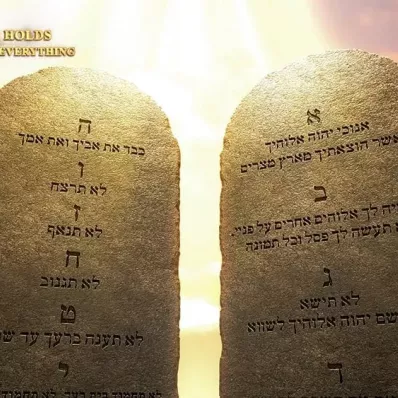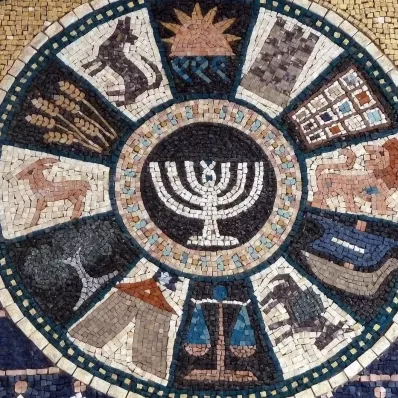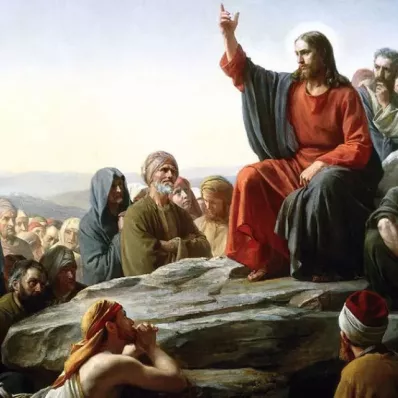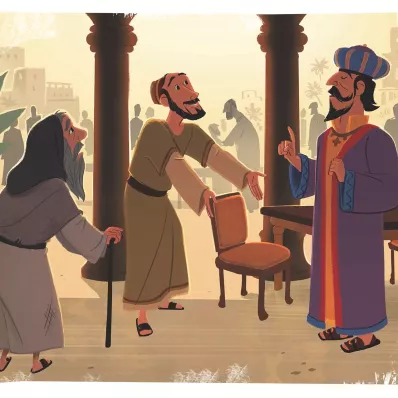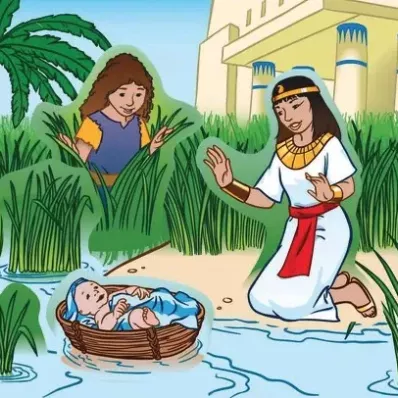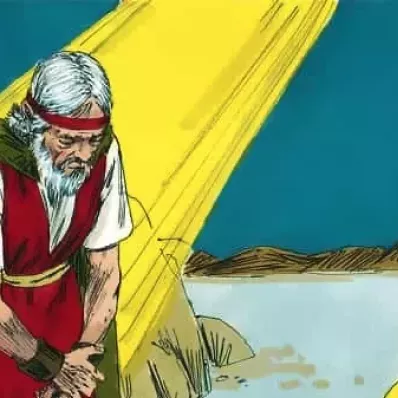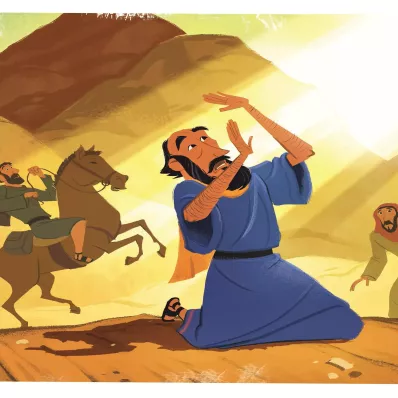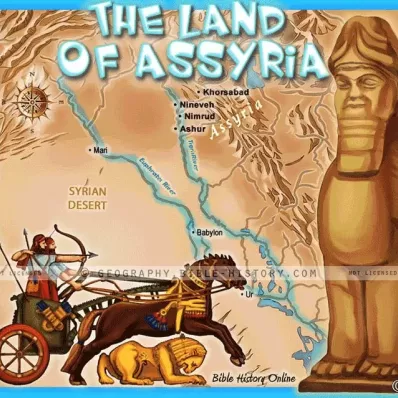Altar
(Heb. mizbe'ah, from a word meaning "to slay"), any structure of
earth (Ex. 20:24) or unwrought stone (20:25) on which sacrifices
were offered. Altars were generally erected in conspicuous
places (Gen. 22:9; Ezek. 6:3; 2 Kings 23:12; 16:4; 23:8; Acts
14:13). The word is used in Heb. 13:10 for the sacrifice offered
upon it--the sacrifice Christ offered.
Paul found among the many altars erected in Athens one bearing
the inscription, "To the unknown God" (Acts 17:23), or rather
"to an [i.e., some] unknown God." The reason for this
inscription cannot now be accurately determined. It afforded the
apostle the occasion of proclaiming the gospel to the "men of
Athens."
The first altar we read of is that erected by Noah (Gen.
8:20). Altars were erected by Abraham (Gen. 12:7; 13:4; 22:9),
by Isaac (Gen. 26:25), by Jacob (33:20; 35:1, 3), and by Moses
(Ex. 17:15, "Jehovah-nissi").
In the tabernacle, and afterwards in the temple, two altars
were erected.
(1.) The altar of burnt offering (Ex. 30:28), called also the
"brasen altar" (Ex. 39:39) and "the table of the Lord" (Mal.
1:7).
This altar, as erected in the tabernacle, is described in Ex.
27:1-8. It was a hollow square, 5 cubits in length and in
breadth, and 3 cubits in height. It was made of shittim wood,
and was overlaid with plates of brass. Its corners were
ornamented with "horns" (Ex. 29:12; Lev. 4:18).
In Ex. 27:3 the various utensils appertaining to the altar are
enumerated. They were made of brass. (Compare 1 Sam. 2:13, 14;
Lev. 16:12; Num. 16:6, 7.)
In Solomon's temple the altar was of larger dimensions (2 Chr.
4:1. Compare 1 Kings 8:22, 64; 9:25), and was made wholly of
brass, covering a structure of stone or earth. This altar was
renewed by Asa (2 Chr. 15:8). It was removed by Ahaz (2 Kings
16:14), and "cleansed" by Hezekiah, in the latter part of whose
reign it was rebuilt. It was finally broken up and carried away
by the Babylonians (Jer. 52:17).
After the return from captivity it was re-erected (Ezra 3:3,
6) on the same place where it had formerly stood. (Compare 1 Macc.
4:47.) When Antiochus Epiphanes pillaged Jerusalem the altar of
burnt offering was taken away.
Again the altar was erected by Herod, and remained in its
place till the destruction of Jerusalem by the Romans (70 A.D.).
The fire on the altar was not permitted to go out (Lev. 6:9).
In the Mosque of Omar, immediately underneath the great dome,
which occupies the site of the old temple, there is a rough
projection of the natural rock, of about 60 feet in its extreme
length, and 50 in its greatest breadth, and in its highest part
about 4 feet above the general pavement. This rock seems to have
been left intact when Solomon's temple was built. It was in all
probability the site of the altar of burnt offering. Underneath
this rock is a cave, which may probably have been the granary of
Araunah's threshing-floor (1 Chr. 21:22).
(2.) The altar of incense (Ex. 30:1-10), called also "the
golden altar" (39:38; Num. 4:11), stood in the holy place
"before the vail that is by the ark of the testimony." On this
altar sweet spices were continually burned with fire taken from
the brazen altar. The morning and the evening services were
commenced by the high priest offering incense on this altar. The
burning of the incense was a type of prayer (Ps. 141:2; Rev.
5:8; 8:3, 4).
This altar was a small movable table, made of acacia wood
overlaid with gold (Ex. 37:25, 26). It was 1 cubit in length and
breadth, and 2 cubits in height.
In Solomon's temple the altar was similar in size, but was
made of cedar-wood (1 Kings 6:20; 7:48) overlaid with gold. In
Ezek. 41:22 it is called "the altar of wood." (Compare Ex.
30:1-6.)
In the temple built after the Exile the altar was restored.
Antiochus Epiphanes took it away, but it was afterwards restored
by Judas Maccabaeus (1 Macc. 1:23; 4:49). Among the trophies
carried away by Titus on the destruction of Jerusalem the altar
of incense is not found, nor is any mention made of it in Heb.
9. It was at this altar Zacharias ministered when an angel
appeared to him (Luke 1:11). It is the only altar which appears
in the heavenly temple (Isa. 6:6; Rev. 8:3,4).



